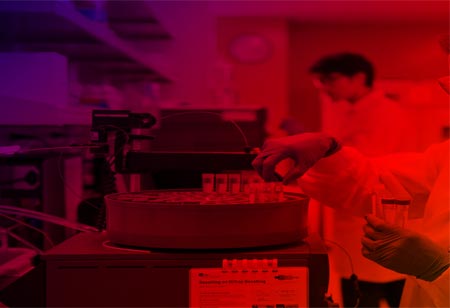Petrochemicals remain to play a vital role in society as chemical building blocks.
FREMONT, CA: Petrochemicals have played a major role in society, accepting novel technologies and procedures to drive efficiency advancements and cost lowering. The focus is now on reducing the carbon footprint of the chemical sector, which is the third greatest discharging industry behind the iron/steel and cement industries.
The amount of CO2 emitted by syngas varies.
Syngas production employs steam methane reformer (SMR) technology to transform natural gas into a mixture of mostly hydrogen and carbon monoxide – specified as syngas. Syngas gets its name from its application as a building block for synthesizing other chemicals, including ammonia fertilizers, cleaner burning fuels for transport, ethylene, propylene, butadiene for plastic manufacture, and commodity chemicals like methanol.
Methanol is employed to make millions of products in practically all aspects of our lives, comprising acrylic plastic, synthetic fabrics, and fibers used to make clothing, paint, adhesives, and plywood used in construction, a chemical agent in pharmaceuticals and agrochemicals. Hydrogen can also be employed to power fuel-cell cars and trucks and will operate alongside battery technology to propel the decarbonization of the transport industry.
Steam regenerating is an endothermic process, which implies that high levels of heat are required to be supplied to push the reaction; in the conventional SMR process, this heat is produced by burning methane in a distinct process stream, produces CO2 committing a high carbon intensity for this method. Carbon capture & storage (CCS), in which the CO2 is captured and later stored (for example, in drained oil and gas fields), can lower the carbon intensity of the SMR process.
Unfortunately, this "post-combustion" (Fired CCS) CO2 is generated as a dilute, relatively low-pressure stream, making it tricky and relatively expensive to capture. The other considerable source of CO2 is the process's adverse reaction during syngas production. The capture of this procedure CO2 (Process CCS) is less complicated and pricey as it has a more stable composition and fewer impurities. It leaves the reactor at a favorable (high) pressure for capture through established solvent and absorbent-based technologies.
Modern reforming produces CO2, which can be caught.
The glad tidings are that there is a proven strategy to produce syngas at scale in which entire CO2 (Process CCS) emerges in a single stream at high pressure, making it simple and economical to capture with extremely high efficiency – 95% and beyond. Advanced reforming, Autothermal Reforming (ATR), and utilizing Gas Heated Reforming (GHR) have been employed at an industrial scale for decades and eliminate the requirement for a separate stream of methane to produce the temperature to drive the reactions. This eradicates the dilute, low-pressure outlet stream comprising CO2 (Fired CCS).
A further benefit of advanced reforming is that it uses natural gas within syngas production more efficiently, leading to lower operating costs.
Lowering syngas carbon intensity currently and for the future with CCS and modern reforming: GHG emissions from diverse hydrogen production pathways in 2030 and 2050 kg CO2 / kg H2.
Renewable carbon sources sustain petrochemicals' viability.
From the broader perspective, the chemical industry's products possess carbon, which will proceed, so a carbon-free chemical industry isn't feasible. Still, as stated above, the industry can and will find means to employ carbon more efficiently, lowering carbon intensity and CO2 emissions to their levels.
A portion of this drive, the industry is considering making chemicals through renewable carbon sources, like biomass, municipal solid waste, and caught CO2. Incorporating this carbon with hydrogen from electrolysis generated with renewable electricity allows further carbon footprint diminutions.
Moving towards net zero
Attaining net zero targets and restricting global temperature rises to the 1.5C suggested by the intergovernmental panel on climate variation will be very challenging. Governments and industries will require to deploy diverse technologies to fulfill these objectives. Modern reforming technology, available and shown at large scale today, can play a major role in the shift towards net zero by enabling syngas production with a very down carbon footprint. This syngas, and the hydrogen within it, can support and reduce the chemical industry's carbon footprint considerably and will support the decarbonization of other areas like transport and agriculture. And the beauty is that the path to utilize this technology at scale and with very minimum CO2 emissions live today, and its deployment will provide the world a great head start in the race to net zero.

